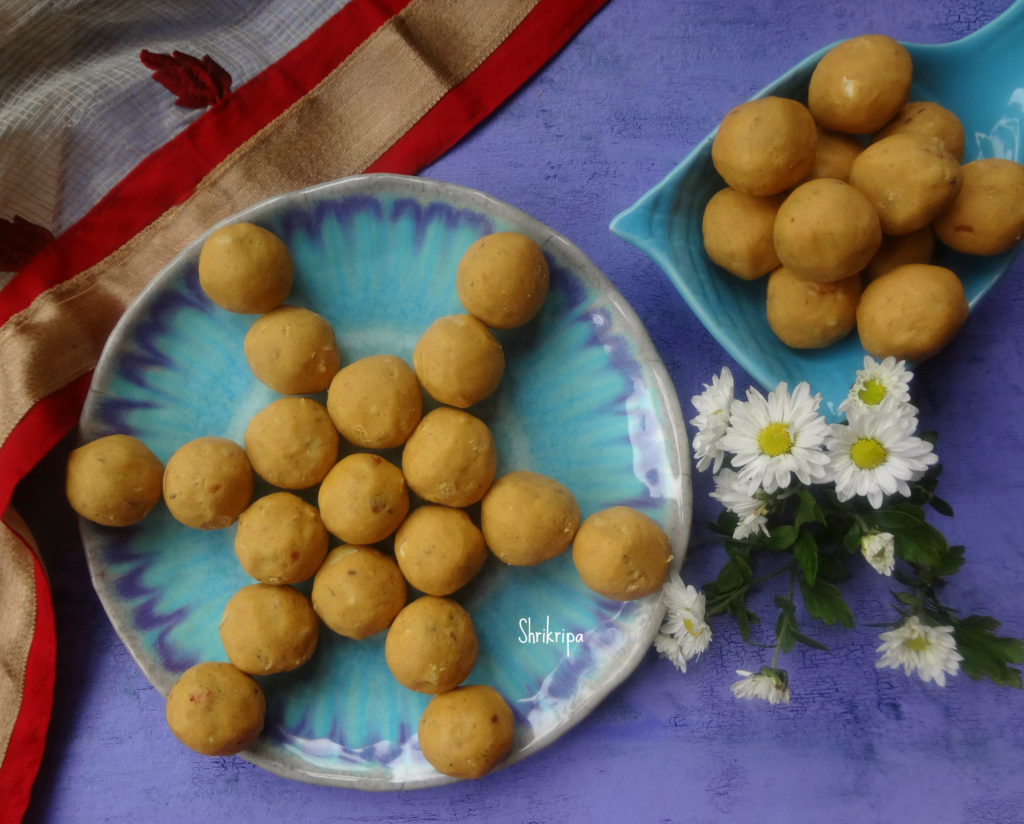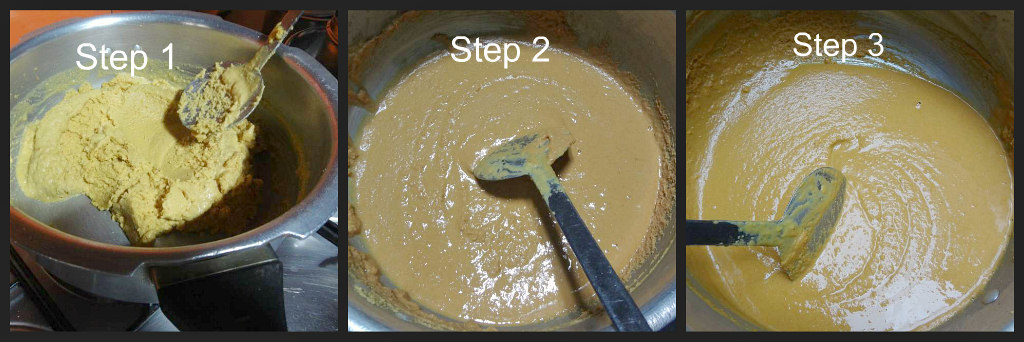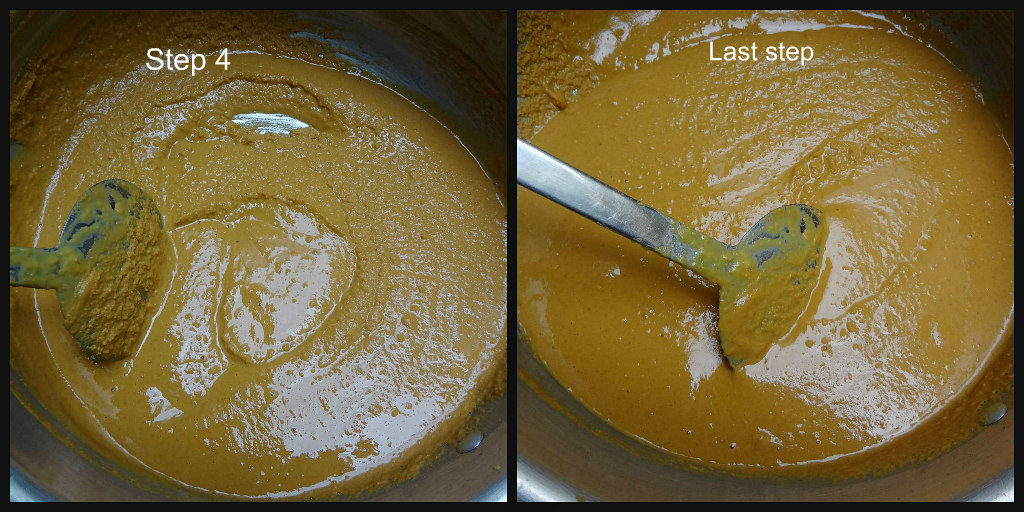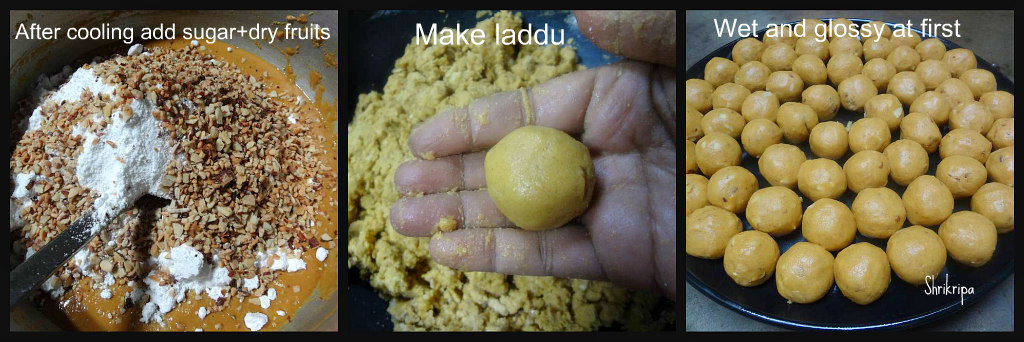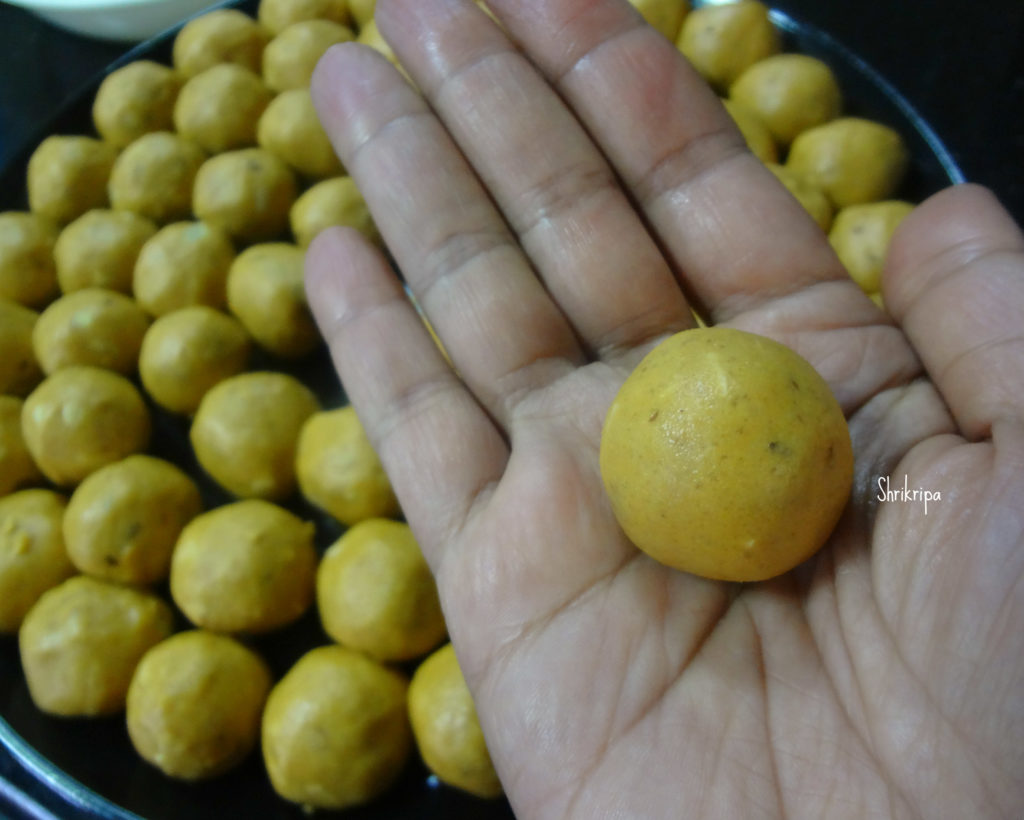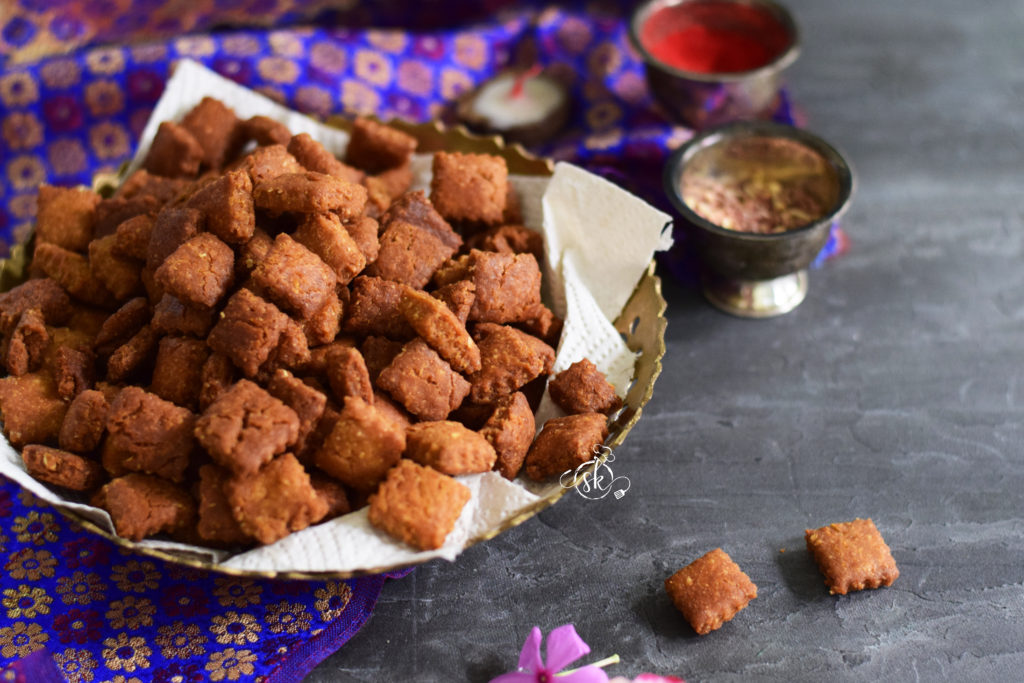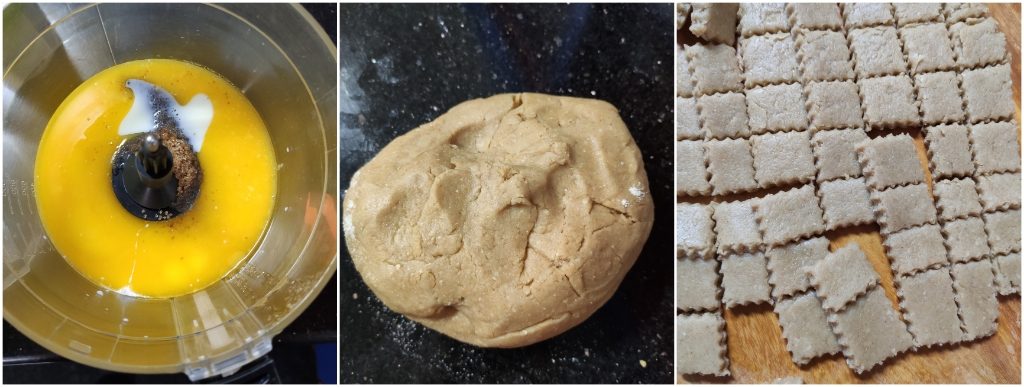Deepavali aka Diwali is an important festival of India and is spread between three days. Indian festivals are incomplete without sweets and savouries. In India, each festival has its own significance in celebration as well as its menu. Gujiya is one of them and has a very important role during Diwali.
Gujiya is a deep-fried flour-based delicacy, with different fillings in different regions. It is known by a different name in each region. Outer cover will be the same and inner stuffing varies from Rava – sugar, coconut – jaggery, coconut – sugar, mawa (milk solids) with dry fruits or with only dry fruits are traditionally seen. Nowadays you get to see so many variations from chocolate to cheese filling as well as baked version.
In North India, after frying the Gujiya, they usually dip it in a sugar syrup and outer cover would be wet and shiny. In south India, we normally deep fry and serve as it is and it’s known as Karanji / Karjikai.
I used to follow Chef Sanjeev Kapoor and learnt so many recipes from him and this is one such recipe. Over the years, I tweaked it a little and adjusted it according to our taste and it has one added advantage of longer shelf life, due to the usage of milkmaid instead of khoya.
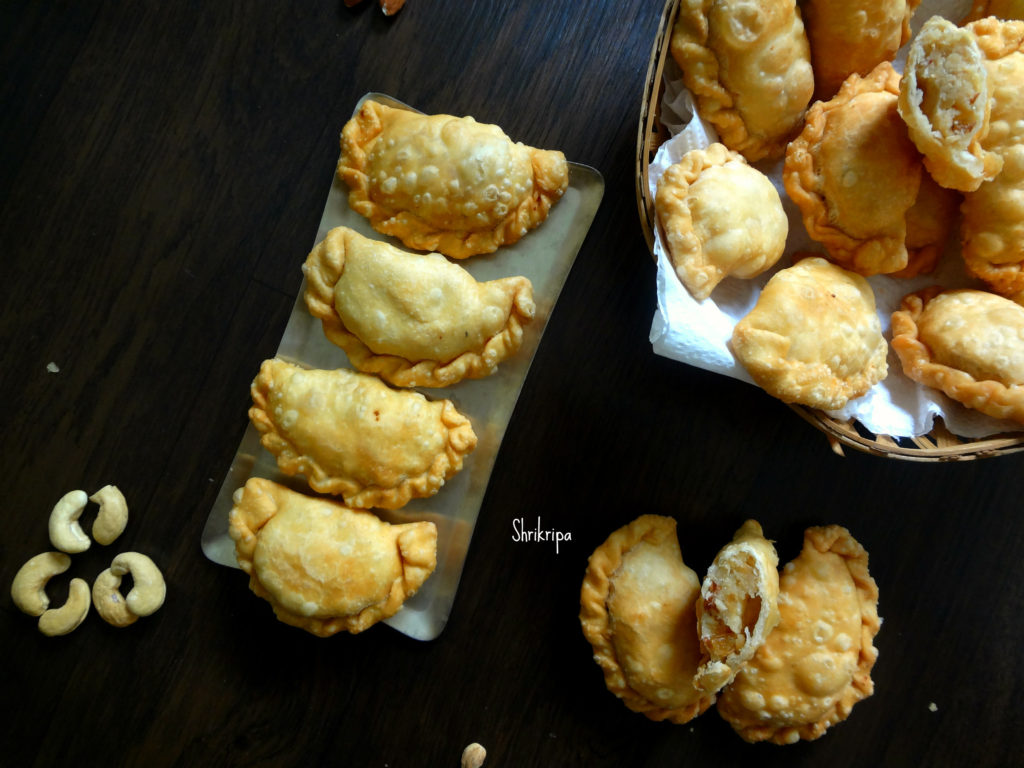
Ingredients:
For the outer cover / shell:
All-purpose flour – 2 ½ cups
Salt – ¼ tsp
Ghee – 6 table spoons
Water – As needed (normal water)
Oil – for Deep frying
For the stuffing /filling:
Desiccated coconut – 200 grams
Semolina – 2 table spoons
Almonds – ¼ cup
Cashew – ¼ cup
Raisin – ¼ cup
Cardamom – 1 tsp
Condensed milk – 1 tin (400 grams)
Method:
For the outer cover-

-In a bowl, add flour and pour ghee. Rub the ghee and flour by using your hand for 5 to 10 minutes.
-After a while, flour would resemble like a semi wet crumb.
-Now add required amount of water to make a firm dough.
-Cover the dough with wet cloth and keep aside for half an hour.
Note: Dough approximately holds ½ cup of water.
In the meantime, prepare the stuffing –

-Roast semolina in a low flame, switch off the gas. Mix in all the other ingredients from almond to condensed milk.
-Keep it until mixture is non-sticky while touching.
-Now comes the actual procedure. You can use three methods.
- Use Gujiya mould.
2.Take a dough, roll into big thin circle, use cookie cutter to make small, uniform circle.
- Take little dough, make small poori like discs.
Here I have followed the third method.
This quantity has yielded 28 Gujiya.

-Divide the dough, make roundels, fill the stuffing, close into half.
-Dip your hand in water, now, start folding the edges from one corner and go on folding like a half diamond shape at regular intervals until you reach the other end.

-Keep this ready, stuffed, yet to fry Gujiya to air dry.
-Repeat the procedure and finish off the filling work.

-Heat the oil for deep frying in low temperature.
-When oil is hot, drop one by one Gujiya, fry in a low flame to get good results.
-When everything is fried and cooled, store it in an air tight container.
NOTE:
To get a perfect Gujiya – these points are very important.
1- Rubbing the ghee + flour.
2-Frying in a low fire







